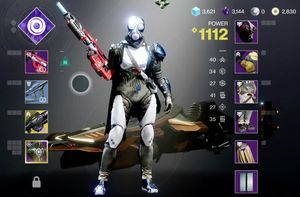Games as a Service are Ruining Gaming
December 21, 2021
There was once a time when I could check out a different video game every few weeks, burn through it, and move onto the next one. These days I find myself playing one or two different games for months on end, grinding out XP and completing daily challenges so I can get a fancy coat of paint for a gun I'll never use or a double XP token I can redeem to get it twice as fast.
The whole "games as a service" or "live-service" model of games became a popular way of extending the shelf life of games and, more importantly, monetizing those games beyond their initial purchase price.
It's been a thing since MMOs started charging subscription fees back in the day, and has evolved into a constant stream of content doled out slowly over the course of "seasons" — arbitrary chunks of time where you have a limited opportunity to acquire mostly cosmetic items (i.e. not affecting gameplay) by playing the game or via micro-transactions.
Damn near every triple-A multiplayer game does this now. Destiny, Fortnite, Apex Legends, Call of Duty, Halo Infinite and NBA 2k, to name a few. Some are more rewarding than others, but they all follow the same pattern. You buy a "Battle Pass", usually for $10-20 per season (each spanning 6-8 weeks), and unlock items by progressing through the pass. You can also pay more money to unlock levels of the pass (often ~100 levels per season). There's also a store where you can buy other stuff exclusively for real-world money.

Destiny
Destiny was the first game I played that followed this model. I had a ton of fun with it, logging on and playing with friends each night as we grinded for new guns, emotes, vehicles and other virtual tchotchkes. Most of it you could get as random drops from playing the game or participating in limited-time seasonal activities. Some of it you could only get by dropping cold, hard cash in the "Eververse Store".

For many years(!) I was content doing this, sinking thousands of hours(!!) and who knows how much money into dressing up my virtual space Barbie. Eventually I got tired of having to do the same monotonous activities for a bunch of gear that quickly became obsolete as soon as the next thing dropped.
I eventually quit Destiny cold-turkey, but I couldn't escape the allure of live-service games like it.
NBA 2k
The NBA 2k series is probably the most egregious offender of charging you money for a bunch of useless virtual stuff. On top of the $60 price tag for the game itself (of which annual versions — slightly modified versions of the previous year's game — require shelling out another $60), the game is relentless in its use of virtual currency (cleverly named "VC") in all of its many modes.
Like creating your own player and working your way through the ups and downs of an NBA career while playing pickup games? NBA 2k has a mode for that, complete with story lines directed by the likes of Spike Lee or starring A-list celebs like Idris Elba. You usually play a top prospect... and the game starts you as one of the lowest rated players in the league.
Oh, you're the #1 draft pick? Congrats, you're now the third-string point guard for the Cleveland Cavaliers. But for the low price of US$100, you can bump your rating instantly from a 65 to an 85 and deck yourself out in Nike gear from head to toe, while all those poor kids have to grind it out for months while wearing grey sweats, a brown tee shirt and a pair of Kirkland shoes. (CostCo makes shoes, right?)
You'd rather open a bunch of packs of cards and build a team of NBA stars past and present? NBA 2k has you covered with MyTeam, where you start off with a bunch of the worst players to ever lace up a pair of Jordans and get thrown into games with people who have shelled out hundreds, if not thousands of dollars for a chance to pick up rare and powerful cards.
Want to buy some of those cards? That'll be US$100, please. But you won't get those cards. Instead here's the 12th man on the worst team in the league and a pair of Reebok Pumps that will boost that player's free throw rating by one point for a single game. Oh, whoops, that player has a real-life contract with Nike, so they can't even wear those Reeboks.


If this sounds absolutely insane, it's because it is. And NBA 2k's publisher, Take Two, is raking in BILLIONS a year cranking out useless digital crap in games like GTA Online and NBA 2k and selling it to your kids. (And dumb-ass grownups like me.)
On top of that the game is plastered with advertisements for everything from Gatorade, to various shoe brands, to a guest appearance from Jake from fucking State Farm. (I wish I were joking.)
And others...
Call of Duty's massively popular Warzone, a free-to-play battle royale game, is also all-in on the live-service model, pumping out fresh cosmetic items in their store almost daily. And most recently, Halo Infinite launched with a free-to-play multiplayer mode with a seasonal "Battle Pass" that has been under a lot of criticism for its stingy progression model.

Sorry, other games
As long as video game publishers keep raking in money off the micro-transactions the live-service model generates, we'll only see more games adopt it. Meanwhile, lots of great games from small, independent studios fall through the cracks because so many gamers are stuck doing their daily video game chores. (My wife likes to say, "why don't you do some actual chores?")
